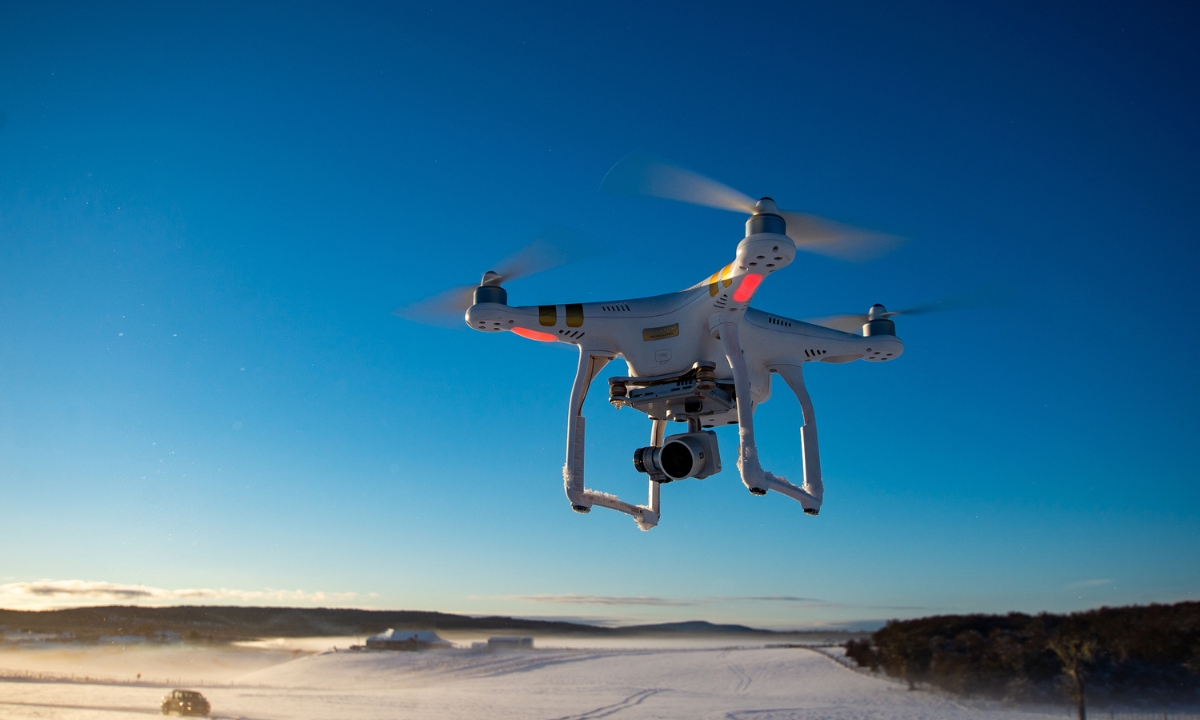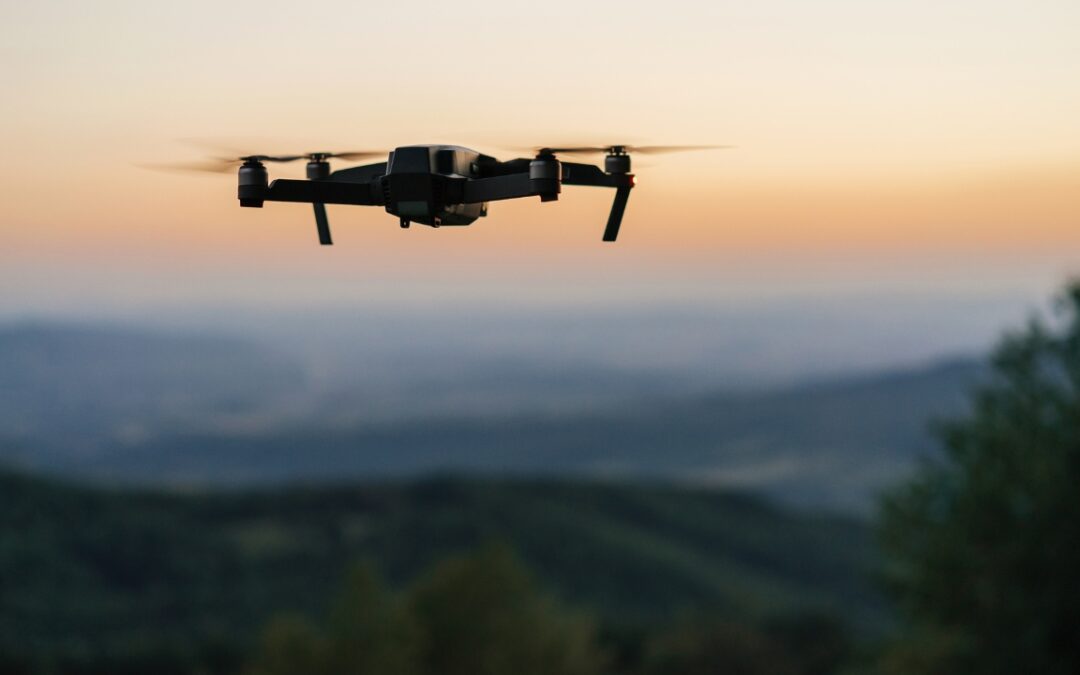Bridge inspections are essential for ensuring the safety and longevity of critical infrastructure. As technology evolves, drones, or unmanned aerial vehicles (UAVs), have emerged as a promising tool for conducting under-bridge inspections. However, while UAVs offer innovative capabilities, they cannot yet replace the tried-and-true effectiveness of under-bridge inspection platforms.
The importance of hands-on techniques and direct visual inspections remains paramount for comprehensive evaluations. In this article, we’ll explore the potential of drones in under-bridge inspections, their current limitations, and why platforms continue to be indispensable for maintaining the integrity of our bridges.

The Rise of Drone Technology in Bridge Inspections
Drones have revolutionized numerous industries, including construction, agriculture, and emergency response. In fact, it is undeniable that they have – and will continue – to become more integrated into the functional technology utilized for infrastructure inspections and maintenance work.
One industry webinar promotion noted that,
“From bridges to power lines, pipelines to railways, UAV technology has revolutionized the way we monitor and maintain critical infrastructure… UAVs equipped with advanced sensors and imaging technologies provide unparalleled access, speed, and accuracy in assessing infrastructure integrity.”
Furthermore, in the realm of transportation infrastructure inspections, they provide several advantages:
Accessibility to Hard-to-Reach Areas
Drones can easily navigate around complex structures, allowing inspectors to access areas that would otherwise require significant time and effort using traditional methods. For example, they can quickly scan the underside of a bridge deck or fly around support piers without the need for large equipment setups.
Enhanced Data Collection
Equipped with high-resolution cameras, thermal sensors, and even LiDAR technology, drones can capture detailed imagery and data. These capabilities allow inspectors to identify cracks, spalling, or other surface-level anomalies remotely.
Cost and Time Efficiency
Deploying drones can save time and reduce costs associated with labor and equipment. They eliminate the need for lane closures and minimize disruptions to traffic flow, making them an attractive option for preliminary assessments or large-scale scanning.
As a recent article reported,
“NTT Corporation (NTT) and NTT e-Drone Technology Corporation have developed a cutting-edge method to detect and repair corroded steel materials on bridges using a combination of AI image recognition and drones. This new approach aims to overcome the limitations of traditional visual inspections, ensuring the safety and longevity of steel structures worldwide. By utilizing this technology, the companies expect to significantly reduce the cost and effort of maintaining critical infrastructure like bridges.”
The 5 Major Limitations of Drones in Bridge Inspections
Despite their advantages, drones face several limitations that prevent them from fully replacing traditional inspection methods. These challenges highlight the continued importance of under-bridge platforms for thorough evaluations.
1. Lack of Hands-On Inspection Capabilities
Bridge inspections often require tactile techniques, such as hammer sounding or material sampling, to assess structural integrity. Drones, by their very nature, cannot perform these hands-on tasks. While they can identify surface issues, they fall short in evaluating deeper, structural concerns.
2. Inability to Conduct Detailed Visual Inspections
Drones rely on cameras to capture imagery, but the quality of video or photographs is limited by lighting conditions, camera resolution, and distance. Inspectors viewing footage remotely may miss subtle signs of deterioration, such as fine cracks or early-stage corrosion, which are more easily detected during close-up, in-person evaluations.
3. Challenges in Complex Environments
Environmental factors such as strong winds, electromagnetic interference, and restricted GPS signals can hinder drone operation, particularly in the tight, confined spaces often found beneath bridges. Additionally, certain bridge designs, such as those with deep spans or intricate frameworks, may limit a drone’s maneuverability and effectiveness.
4. Regulatory and Safety Constraints
Drone usage is subject to stringent regulations, including flight restrictions near populated areas, airports, and sensitive infrastructure. Obtaining the necessary permissions for inspections can be time-consuming. Furthermore, drones carry risks of collision or malfunction, which could lead to costly delays or damage.
5. Limited Battery Life
Most drones have a flight time of 20–30 minutes, necessitating frequent battery changes or recharges during large-scale inspections. This limitation reduces efficiency and may require additional equipment and logistics to manage battery swaps.
The Continued Importance of Under-Bridge Inspection Platforms
While drones provide valuable preliminary insights, under-bridge inspection platforms remain the gold standard for comprehensive assessments. Here’s why:
- Enable Hands-On Inspections: Under-bridge platforms give inspectors direct access to a bridge’s structural elements, allowing them to perform tactile techniques that drones cannot replicate. Hands-on inspections, such as tapping for delamination or measuring material thickness with ultrasonic devices, provide critical information about a structure’s condition.
- Facilitate Detailed Visual Assessments: Platforms allow inspectors to get up close to a bridge’s components, ensuring that even the smallest defects are identified. Direct visual inspections are indispensable for detecting hairline cracks, rust stains, or other early warning signs of structural issues.
- Provide Safe and Stable Work Environments: Under-bridge platforms provide a secure and stable surface for workers, reducing the risks associated with working at height or in precarious positions. Safety features like guardrails, harness attachments, and anti-slip surfaces enhance worker safety during inspections.
- Offer Accessibility Across Complex Structures: Modern platforms are engineered to navigate various bridge designs, from wide spans to steep inclines. Adjustable configurations and telescoping arms make it possible to access hard-to-reach areas without compromising safety or efficiency.
- Support Advanced Inspection Technologies: Platforms can integrate with cutting-edge tools, such as thermal cameras, 3D scanners, and nondestructive testing equipment. This combination of human expertise and technology enables the most comprehensive bridge evaluations possible.
A Complementary Approach: Drones and Platforms Working Together
The future of bridge inspections may not lie in choosing between drones and platforms but in leveraging both technologies to their fullest potential. By combining the strengths of drones with the reliability of under-bridge platforms, inspection teams can achieve unparalleled efficiency and accuracy.
One strategy is to implement preliminary scanning with drones. Drones can be deployed for initial surveys, scanning large bridge spans quickly to identify potential problem areas. This preliminary data helps prioritize sections of the bridge for closer examination using platforms.
The use of drones provides a comprehensive evaluation with platforms. Once critical areas are identified, under-bridge platforms enable inspectors to conduct detailed, hands-on evaluations. This dual approach ensures that no defect goes unnoticed while optimizing time and resources.
Dedicated UAVs, working in tandem with under bridge platform-based human inspectors, can generate enhanced documentation and monitoring. Data collected by drones, such as high-resolution imagery and thermal scans, can complement findings from platform-based inspections. Together, these tools provide a comprehensive record of a bridge’s condition, aiding in maintenance planning and long-term monitoring. Drones by themselves still do not function in isolation, as one article points out,
“While a drone will collect a wide range of information, it requires other supporting technologies including the drone data analysis software. This enables organizations to analyze and make better use of drone data.”

The Road Ahead: Balancing Innovation with Reliability
As UAV technology continues to evolve, drones will undoubtedly play an increasingly important role in bridge inspections. Advanced features such as AI-powered defect detection, longer flight times, and improved navigation systems could address some of the current limitations. However, until drones can replicate the tactile and close-up capabilities of human inspectors, under-bridge platforms will remain a cornerstone of bridge preservation efforts.
As early as 2018, the Federal Highway Administration (FHWA) was touting the use of drones to enhance the ‘first-person visual’ inspection tasks of bridge inspectors.
“Connected directly to a drone’s video feed, FPV (First-person vision) goggles give bridge inspectors a first-person visual that is equivalent to being about 3 feet (0.9 meters) away from the components they are inspecting… The technology has potential to enable inspectors to visually examine bridge components easily and with enough precision to see even hairline cracks in the field. It offers these benefits without requiring standard inspection techniques, such as using ladders, climbing equipment, or bridge inspection vehicles.”
Investing in platforms ensures that inspection teams can perform thorough evaluations, prioritize safety, and extend the lifespan of critical infrastructure. By balancing innovation with proven methods, the industry can maintain the highest standards of safety and efficiency.
Embracing the Future of Highway Bridge Inspection Technologies
While drones bring exciting possibilities to the field of bridge inspection, their limitations underscore the continued importance of under-bridge platforms. These platforms provide the hands-on access and detailed assessments necessary for ensuring the safety and longevity of our bridges. By adopting a complementary approach that integrates drones and platforms, inspection teams can harness the best of both technologies, creating a future where bridge inspections are faster, safer, and more effective than ever.
Under Bridge Platforms: Your Full Bridge Access Experts
At Under Bridge Platforms, we’re more than just an equipment rental company. We’re your trusted partner for bridge access solutions. With a proven record of accomplishment serving the highway bridge industry across California, Washington, Oregon, Idaho, Nevada, Montana, Wyoming, and beyond, we’ve established ourselves as the go-to experts for under bridge equipment.
Elevate Your Bridge Projects with Our Expertise
Contact us today to discuss your project and learn how our expertise and equipment can help you achieve your goals. Let’s work together to elevate your bridge access and ensure project success.


Recent Comments